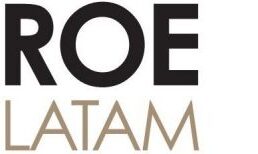
Internal Investigations: A Guide to Mitigating Corporate Risks and Ensuring Compliance
In an era where corporate governance and regulatory compliance are key, organizations must prioritize proactive risk management and ethical oversight. Allegations of misconduct—ranging from fraud to policy violations—pose significant threats to reputation, financial stability, and stakeholder trust. This guide provides a structured approach to internal investigations, designed to safeguard organizational integrity and ensure legal compliance. While grounded in Mexican legal principles, the strategies outlined here are universally applicable, offering businesses a roadmap to navigate crises effectively.
The Strategic Importance of Internal Investigations
Internal investigations serve as both a protective mechanism and a strategic tool for maintaining corporate accountability. Key considerations include:
Organizations with robust compliance programs may reduce penalties by up to 50% under frameworks like the U.S. Foreign Corrupt Practices Act (FCPA).
Inadequate evidence preservation or retaliation against whistleblowers can escalate legal repercussions and damage employee trust.
- Regular communication on the existence of whistleblowing hotline to
employees engenders confidence and contributes to its effectiveness. (KPMG whistle
blowing survey
report )
Adopting a methodical approach to investigations enables organizations to strengthen internal controls, demonstrate accountability, and reinforce stakeholder confidence.
A 7-Step Framework for Effective Internal Investigations
1. Preliminary Assessment: Swift Evaluation of Allegations
Conduct an initial review to determine the credibility and scope of allegations:
Assess credibility: Even anonymous claims warrant scrutiny, given that 30% of whistleblowers fear retaliation (KPMG whistle
blowing survey
report, 2021)Determine legal implications: Escalate issues involving bribery or corruption immediately, while resolving minor HR matters internally.
Prioritize risks: Utilize a risk matrix to evaluate potential financial, operational, and compliance impacts.
Best Practice: Issue a legal hold notice to preserve emails, communications, and documents, preventing data tampering.
2. Evidence Preservation: Securing Digital and Physical Records
Robust evidence management is critical for legal admissibility and investigative accuracy:
Digital forensics: Employ tools like Relativity or Nuix to capture electronic data, including emails and encrypted messaging platforms.
Physical documentation: Restrict access to sensitive files and maintain a verifiable chain of custody.
Compliance with data laws: In Mexico, adhere to the Federal Law on Protection of Personal Data Held by Private Parties when accessing employee devices.
Expert Insight: Collaboration with forensic specialists ensures evidence integrity, which is pivotal in 90% of adjudicated cases.
3. Investigation Planning: Structuring for Success
Develop a detailed plan to guide the investigation:
Define scope: Limit the inquiry to relevant departments, timelines, and allegations to avoid inefficiencies.
Assign roles: Engage legal, HR, and IT teams to streamline workflows.
Case Study: A multinational firm avoided $200M in FCPA penalties by engaging forensic accountants to trace illicit payments.
4. Conducting Interviews: Balancing Sensitivity and Legal Protection
Interviews require tact to avoid witness alienation:
Sequential questioning: Begin with junior staff to gather foundational insights before interviewing executives.
Upjohn Warning: Clarify that discussions are confidential but owned by the organization.
Documentation: Use handwritten notes to minimize tension and preserve legal privilege, avoid recording unless necessary.
Compliance Note: Implement anti-retaliation measures, such as anonymizing whistleblower identities, to prevent legal disputes.
5. Document Review: Leveraging Technology for Efficiency
Modern investigations demand advanced analytical tools:
AI-powered e-discovery: Platforms like Everlaw expedite data analysis, flagging terms such as “kickback” or “unauthorized payment.”
Financial forensics: Identify irregularities in vendor payments or revenue recognition, often indicative of fraud.
Timeline mapping: Visual chronologies help uncover patterns and pinpoint culpability.
6. Final Reporting: Clarity and Actionable Insights
A comprehensive report should:
Present factual findings: Objectively detail events without speculative conclusions.
Analyze legal implications: Reference frameworks like Mexico’s General Law of Administrative Responsibilities or the FCPA (among others).
Recommend remediation: Propose policy updates, training, or disciplinary actions.
Best Practice: Include an executive summary to facilitate decision-making for time-constrained leaders.
7. Remediation: Closing Gaps and Restoring Trust
Effective remediation prevents recurrence:
Disciplinary actions: Terminate offenders in compliance with Mexico’s Federal Labor Law to avoid litigation.
Enhanced controls: Automate approvals for high-risk transactions and mandate annual anti-corruption training.
Self-disclosure: Voluntary reporting to regulators like the DOJ can reduce penalties by 75% (DOJ Guidance).
Legal Pitfalls to Avoid
Data Privacy Non-Compliance: Violations of Mexico’s data laws can incur fines up to $1.5M.
Labor Law Missteps: Mexican courts often favor employees in wrongful termination suits.
Cross-Border Conflicts: Align policies with the GDPR, FCPA, and local regulations.
Privilege Misunderstanding: In Mexico, only external counsel communications are privileged.
Delayed Reporting: Prompt self-disclosure is critical for cooperation credit under DOJ guidelines.
Best Practices for Sustained Compliance
Foster a Speak-Up Culture: Implement anonymous hotlines and incentivize ethical behavior.
Continuous Training: Use interactive modules to educate employees on compliance standards.
Rigorous Audits: Conduct surprise audits and deploy AI monitoring to detect emerging risks.
nternal investigations are not merely reactive but a chance to fortify organizational resilience and demonstrate ethical leadership. By adhering to a structured process—prioritizing evidence preservation, legal compliance, and decisive remediation—businesses can mitigate risks, enhance operational integrity, and foster long-term stakeholder trust. In an evolving regulatory landscape, preparedness is the key of corporate success.
If you found this post intersting perhaps you would like to check these:
- Navigating Cartel and FTO Designations: Advanced Compliance Strategies for Global Businesses
- 6 Essential Requirements of the EU Whistleblowing Directive: A Compliance Guide for Organizations
- 2024 Corruption Perceptions Index (CPI): How Corruption Fuels the Climate Crisis
- UK, France, Switzerland Launch Critical Anti-Corruption Task Force
- ROE Latam Advises CORSAIN of El Salvador on the Implementation of ISO 37001
- ROE Latam Advises the National Public Security Academy of El Salvador on the Implementation of ISO 37001
Feel free to write us to online@roelatam.com
